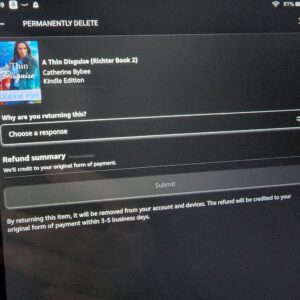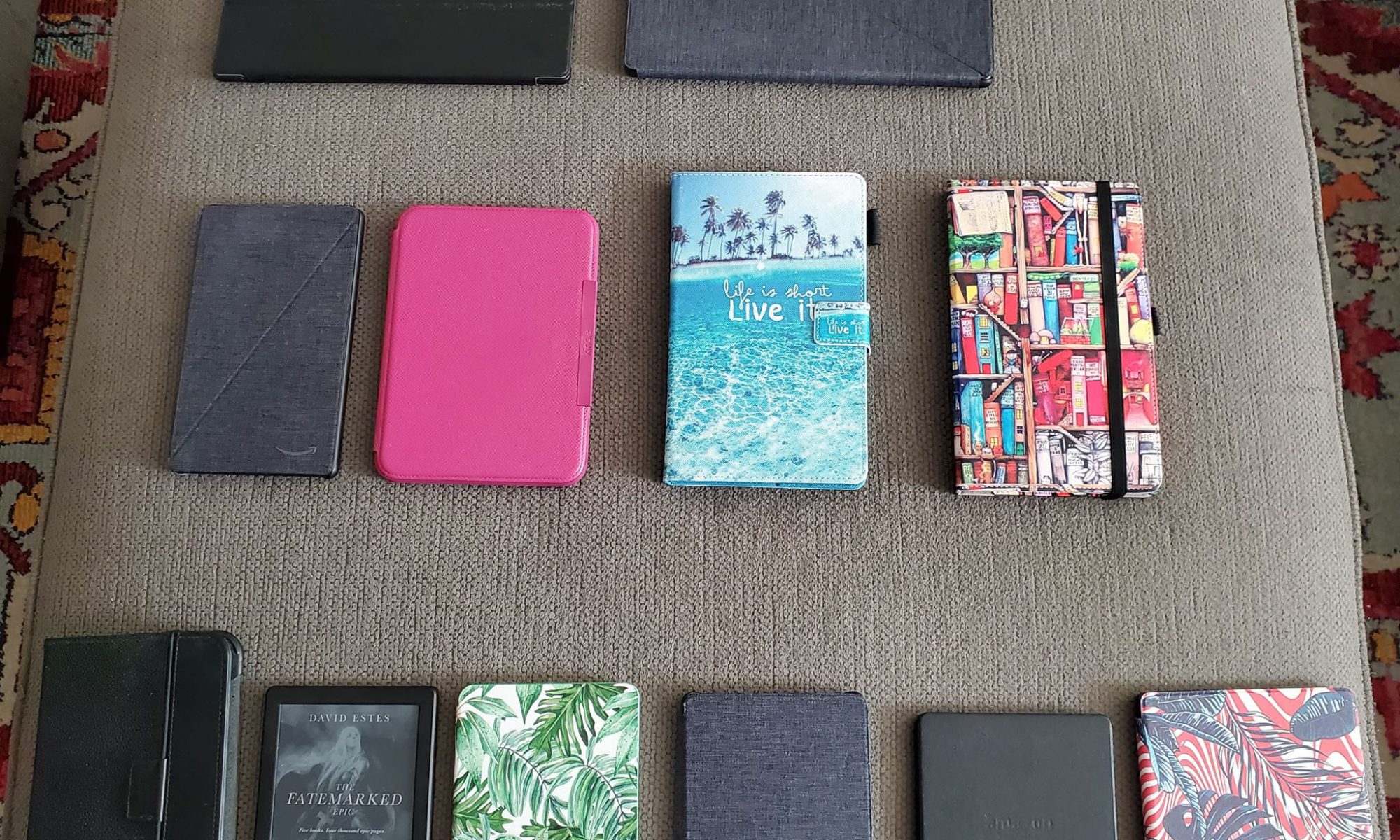Recently, I wrote about the divergent financial realities of readers and authors. In that post, I called out readers who return books for refunds, as those refunds come directly out of the authors’ paychecks.
HOWEVER, after I wrote that post, another issue was brought to my attention via Facebook and specifically via a public post from Stephanie Heinritz on Facebook on June 16, that:
Did you know, if your readers have purchased your title within the last seven (7) days, that ‘Permanently Delete’ button in the iOS app DOES NOT DO WHAT IT SAYS IT DOES? No if a reader has purchased your title within that window, this button also INITAITES A FULL RETURN. 😳 The cherry on top? The Kindle iOS app – you know the one with 3.6 MILLION user downloads on Apple alone – offers your readers ZERO alternative within the app to remove the title from their library without registering as a full refund, and of course a negative profit on your back end, if they are within that seven (7) day window. I also checked this on my account from my repurchase, which I marked as read, and it does the same thing for FULLY CONSUMED CONTENT.
Heinritz then goes into further detail that *after* that initial 7 day window, the “Permanently Delete” option works as most of us would expect – it simply removes the book from your Kindle Cloud entirely *without* initiating a refund.
While Heinritz’s commentary is apparently exclusively about the iOS Kindle app, I personally tested the charge against Amazon’s own Kindle App on the most recently available Kindle Fire 10… with identical results, as seen here:
So what can readers do?
First, you need to understand very clearly that this is happening. As of this writing, if you use the “Permanently Delete” option on a book on your Kindle / Kindle App within the first seven days after purchase, Amazon is initiating a full refund, and that refund ultimately comes not from Amazon, but from the Author’s royalties for that book (as we’ll see momentarily).
I personally recommend never using the “Permanently Delete” option to begin with. “Remove Download” will instead remove the book from your device… but keep it in your library. Maybe you’ll want to come back to it someday. More importantly for the purposes of this commentary, Remove Download will not initiate a return of the book. Ever. At least as the apps currently work as of this writing.
If you *must* use “Permanently Delete”… wait a month or so first. Please. Because if you use that option within the first 7 days, the net effect of this return is actually a *negative* balance for the author, as detailed in this twitter thread in particular from Quenby Olson that has gone viral over the last 18 hours or so as of this writing.
And hey, maybe if we as a book community put pressure on Amazon to address this, they might actually do so? While I am a professional software engineer as my day job and I *suspect* this shouldn’t be an overly hard fix, I’ve never worked for Amazon and can’t say definitively how much effort would be required on their end to fix this issue. But I can say without hesitation as a reader that, to me, it seems like the right thing to do, and that the current practice seems shady to me. (To be clear, without making any actual legal claims regarding whether or not this actually constitutes any breach of any legislative or regulatory act. I am simply noting from a commonsense perspective that in my personal opinion, this is wrong and needs to be fixed.)
What say you, readers?


